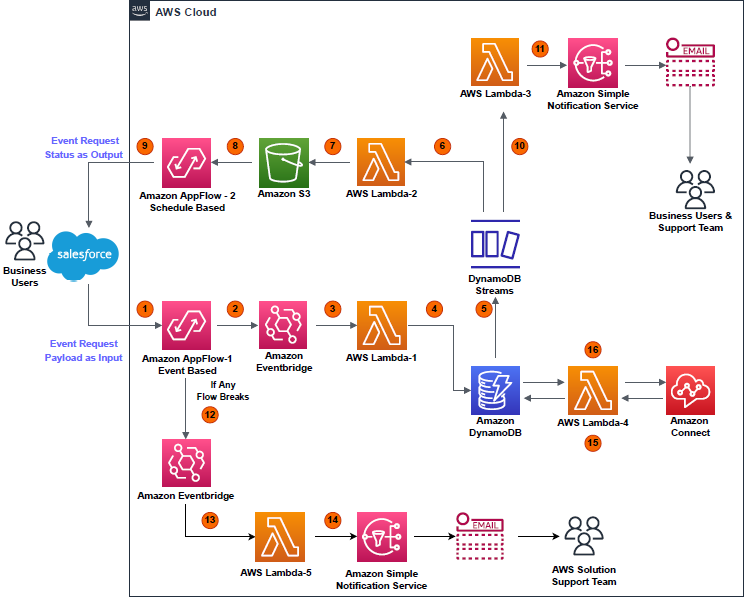AWS Architecture Blog
Category: Amazon DynamoDB
Genomics workflows, Part 4: processing archival data
Genomics workflows analyze data at petabyte scale. After processing is complete, data is often archived in cold storage classes. In some cases, like studies on the association of DNA variants against larger datasets, archived data is needed for further processing. This means manually initiating the restoration of each archived object and monitoring the progress. Scientists […]
Genomics workflows, Part 3: automated workflow manager
Genomics workflows are high-performance computing workloads. Life-science research teams make use of various genomics workflows. With each invocation, they specify custom sets of data and processing steps, and translate them into commands. Furthermore, team members stay to monitor progress and troubleshoot errors, which can be cumbersome, non-differentiated, administrative work. In Part 3 of this series, […]
Let’s Architect! Architecting with Amazon DynamoDB
NoSQL databases are an essential part of the technology industry in today’s world. Why are we talking about NoSQL databases? NoSQL databases often allow developers to be in control of the structure of the data, and they are a good fit for big data scenarios and offer fast performance. In this issue of Let’s Architect!, […]
What to consider when modernizing APIs with GraphQL on AWS
In the next few years, companies will build over 500 million new applications, more than has been developed in the previous 40 years combined (see IDC article). API operations enable innovation. They are the “front door” to applications and microservices, and an integral layer in the application stack. In recent years, GraphQL has emerged as […]
Integrating Salesforce with AWS DynamoDB using Amazon AppFlow bi-directionally
In this blog post, we demonstrate how to integrate Salesforce Lightning with Amazon DynamoDB by using Amazon AppFlow and Amazon EventBridge services bi-directionally. This is an event-driven, serverless-based microservice, allowing Salesforce users to update configuration data stored in DynamoDB tables without giving AWS account access from AWS Command Line Interface or AWS Management Console. This […]
Extending your SaaS platform with AWS Lambda
Software as a service (SaaS) providers continuously add new features and capabilities to their products to meet their growing customer needs. As enterprises adopt SaaS to reduce the total cost of ownership and focus on business priorities, they expect SaaS providers to enable customization capabilities. Many SaaS providers allow their customers (tenants) to provide customer-specific […]
How to track AWS account metadata within your AWS Organizations
United Services Automobile Association (USAA) is a San Antonio-based insurance, financial services, banking, and FinTech company supporting millions of military members and their families. USAA has partnered with Amazon Web Services (AWS) to digitally transform and build multiple USAA solutions that help keep members safe and save members’ money and time. Why build an AWS […]
Use direct service integrations to optimize your architecture
When designing an application, you must integrate and combine several AWS services in the most optimized way for an effective and efficient architecture: Optimize for performance by reducing the latency between services Optimize for costs operability and sustainability, by avoiding unnecessary components and reducing workload footprint Optimize for resiliency by removing potential point of failures […]
Throttling a tiered, multi-tenant REST API at scale using API Gateway: Part 2
In Part 1 of this blog series, we demonstrated why tiering and throttling become necessary at scale for multi-tenant REST APIs, and explored tiering strategy and throttling with Amazon API Gateway. In this post, Part 2, we will examine tenant isolation strategies at scale with API Gateway and extend the sample code from Part 1. […]
Throttling a tiered, multi-tenant REST API at scale using API Gateway: Part 1
Many software-as-a-service (SaaS) providers adopt throttling as a common technique to protect a distributed system from spikes of inbound traffic that might compromise reliability, reduce throughput, or increase operational cost. Multi-tenant SaaS systems have an additional concern of fairness; excessive traffic from one tenant needs to be selectively throttled without impacting the experience of other […]









